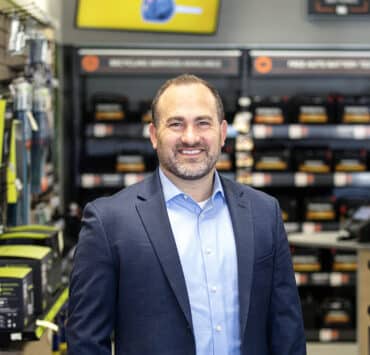|
Getting your Trinity Audio player ready...
|
Jaime Quintana is nothing if not resourceful. As director of facilities, planning, and construction for the Tracy Unified School District in California, he has several state, federal, local constituencies to answer to, while also finding ways to further improve the 20 campus sites. The sites contain over 2 million square feet, which provide learning environments to over 13,500 students, and office and classroom space to approximately 1,740 employees.
Those constituencies include the California Energy Commission (CEC), district taxpayers, educators, the students, and staff. He’s managed to meet most of the needs, including the addition of 60 electric vehicle (EV) charging stations that provide power to district employees and the public.
In the process he’s managed to install an approximate 5.3-megawatt solar energy portfolio at a “no out-of-pocket” expense to the district—under a power purchase agreement (PPA) with ForeFront Power—that is projected to save the district $20 million over a lifespan of 20 years. The system is currently in place on 19 of 20 district buildings, supplying approximately 98 percent of the district’s power needs; some sites actually overproduce and generate income for the district from the utility.

Perhaps just as important is how Tracy Unified extends the value of this system to the education program itself. “The district faculty has a STEM director who has collaborated with us in the development phase, which began three years ago,” Quintana says. They created a web-based dashboard—energy kiosks—that teachers incorporate into their curricula. Students have a separate dashboard that shows how the power is generated and how much it offsets fossil fuel use.
“I have children of my own, ages 11 and 15,” he says, acknowledging the long-term benefits of large-scale renewable energy. “I make it part of their daily chores to see how they can change a component of their world.”
“Site by site, building by building, we save with retrofits of such things as LED lighting and modern HVAC systems.”
Jaime Quintana
It’s important to note the growth of Tracy is situated in San Joaquin County, about 50 miles west of the San Francisco Bay. Since 2000, the population of this historically agricultural community grew from about 57,000 to 93,000 people by 2020.
Tracy Unified is the largest of three school districts serving the city. During the pandemic, the population grew further with emigres from the Bay Area who discovered they could work remotely while enjoying a lower-cost, slower-paced life in this town.
“As the community grows and creates a more dynamic population, the services seen in more urbanized areas will create other demands and perspectives here in ours,” he explains. “The larger use of electric vehicles has subsequently geared the implementation of EV chargers at our schools’ sites.”
The California Energy Code, updated by the CEC in January 2023, sets minimum standards for energy efficiency in schools as well as all other public buildings. The goal is for all new school construction to achieve net-zero energy by 2030, generating clean, renewable energy from their own buildings or off-site where that isn’t possible.
Even working with existing buildings, Quintana is confident his team is ahead of those California-wide requirements. The PPA agreements capitalize on a lot of sprawling buildings with broad roofs—being resourceful with an existing asset. The amount of energy Tracy Unified produces and consumes is equivalent to the power used by 881 average American homes.

Quintana says the district expects the student population to remain flat in the years to come, but it’s adding buildings to accommodate prekindergarten and mental health services. When building, the state also requires minimizing carbon in construction. This is where the district is perhaps more challenged than its equivalents in the Midwest.
“Every region has its opportunities and challenges,” Quintana says. “Our climate is certainly an advantage [against heating costs and with abundant solar]. But when we build, we have to source steel, which is mostly made in the center of the country and the transportation adds to the carbon cost.”
Another requirement of the state’s energy code is to maintain energy management plans, which outline strategies for reducing energy use and maximizing use of renewable resources. For this, Quintana delegates responsibilities to his staff—and specifically trains them to have the comprehensive skills necessary to do so.
“Site by site, building by building, we save with retrofits of such things as LED lighting and modern HVAC systems,” he says. “My staff are less specialized and more generalists in what they know. That means understanding lease options, costs, management systems, monthly costs, and economic trends. They are trained to understand everything that can impact buildings and occupants.
“For example, after recess, kids back in the building can raise the room temperature by three degrees,” he adds. “That affects temperature settings.”
Quintana got his degree in architecture but says early on he was more interested in the life of buildings after design and construction. For thousands of students, teachers, and staff, an awful lot of living happens in the green buildings he oversees.
ForeFront Power is a leading developer of commercial and industrial solar energy, battery storage, and vehicle fleet electrification. Over 15 years together, the ForeFront Power team has developed over 1,400 solar projects, totaling 1.1 gigawatts. ForeFront Power serves business, public, and community solar customers with development, asset management and advisory. A wholly owned subsidiary of Mitsui & Co. Ltd., we bring a robust balance sheet and an “A” credit rating from Standard & Poors.


